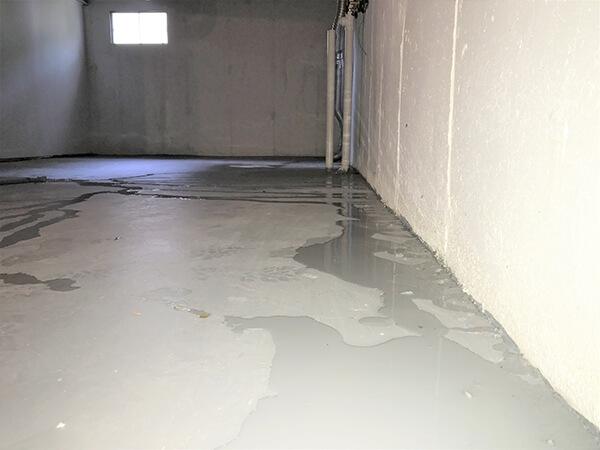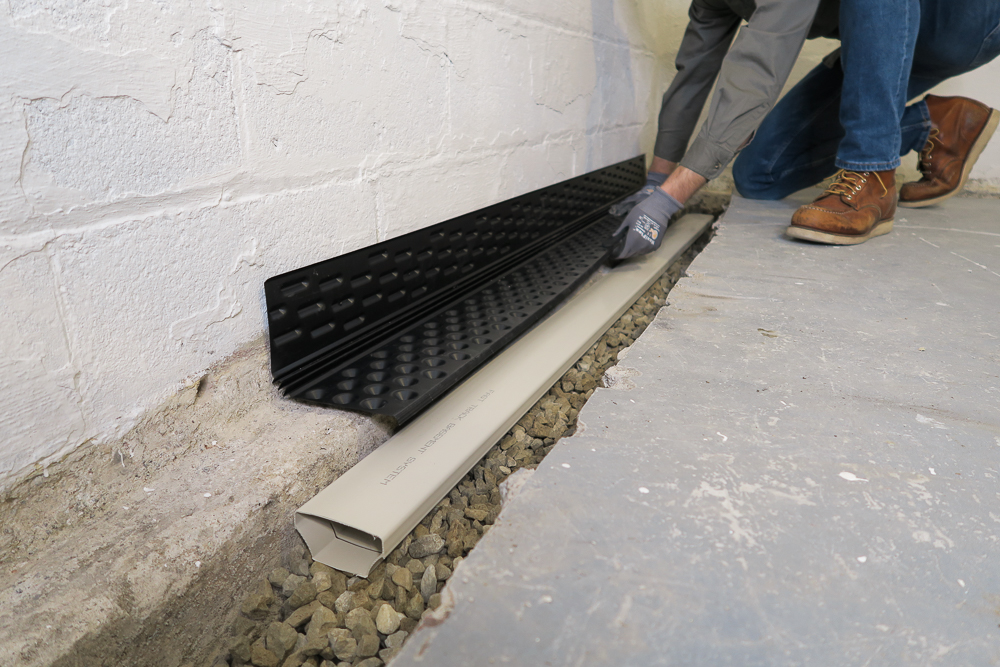How Basement Waterproofing and Exterior Drainage Solutions Work Together
Exactly How Cellar Waterproofing Functions: A Comprehensive Guide for Your Home
Cellar waterproofing is important for shielding homes from water damage. Numerous approaches exist to deal with dampness concerns, each tailored to particular causes. Property owners have to understand these alternatives to pick the very best option for their demands - Sump Pump Installation And Replacement. The effectiveness of these approaches depends on the ideal products and techniques. What are the most usual approaches, and how can they be carried out properly? This guide will discover these essential aspects
Comprehending the Reasons For Cellar Wetness
Although basements are frequently developed to be dry and functional spaces, they can succumb to dampness because of numerous factors. One main cause is poor drainage around the structure, which can cause water merging and infiltration. Additionally, hefty rains or fast snowmelt can overwhelm drainage systems, aggravating wetness concerns. Another considerable variable is the natural humidity present in the ground, which can penetrate with floorings and walls, particularly in older homes with much less effective barriers. Splits in the structure might additionally allow water breach, especially during durations of hefty precipitation. Pipes leaks within the basement can add to moisture build-up, developing a setting helpful to mold development. Ultimately, poor air flow can catch moisture, worsening the total dampness problem. Recognizing these causes is essential for home owners seeking efficient solutions to avoid basement moisture problems.
Kinds of Cellar Waterproofing Approaches
Cellar waterproofing methods are necessary for securing homes from wetness damage and keeping a safe living environment. These methods can be extensively categorized right into interior and external options. Inside waterproofing normally includes the installment of drainage systems, sump pumps, and vapor barriers. These systems function to draw away water away from the basement and protect against wetness from penetrating via the wall surfaces or floor.On the various other hand, outside waterproofing concentrates on preventing water from entering the home in the starting point. This can consist of excavation around the structure, using water-proof layers, and mounting drain tiles to reroute water away from the structure. Additionally, some property owners might choose for a combination of both outside and indoor approaches to assure complete defense. Ultimately, the option of waterproofing technique depends on the particular problems of the home and the level of moisture existing in the cellar.
Products Used in Waterproofing Solutions

Different materials are used in waterproofing options to improve the efficiency of both exterior and interior approaches. Generally made use of products include fluid membrane layers, which produce a seamless obstacle against dampness. These membrane layers are commonly made from polyurethane or rubberized asphalt, supplying adaptability and toughness. Furthermore, cementitious waterproofing products are preferred for their simplicity of application and solid bond to surfaces.For exterior applications, materials such as drainage boards and geotextiles work in rerouting water away from structures. Crushed rock and gravel are likewise utilized in water drainage systems, promoting correct water flow and decreasing pressure build-up. In some situations, specialized sealants and layers, like silicone or epoxy, are put on provide additional defense against water seepage. Together, these products play an important duty in guaranteeing that a cellar remains completely dry and protected from water damage.
Actions to Waterproof Your Basement
Waterproofing a basement involves an organized method to efficiently protect against water intrusion and damages. The initial step is to check the outside of the home, inspecting for splits or gaps in the structure. These should be sealed with a proper water-proof sealant. Next, confirm that downspouts and gutters are working properly and routing water far from the foundation.After addressing exterior problems, the inside needs to be analyzed. Installing a waterproof membrane on basement walls can supply added defense. Water Solutions. It's also recommended to execute a sump pump system to handle any type of water accumulation.Finally, rating the landscape around the home can assist guide water away from the foundation, additional minimizing the danger of water infiltration. By following these steps vigilantly, property owners can produce a robust defense versus cellar flooding and dampness issues
Maintenance and Prevention Tips for a Dry Basement
Regular upkeep and aggressive procedures are crucial to making sure a dry basement long after initial waterproofing initiatives. Home owners must regularly examine gutters and downspouts, guaranteeing they straight water away from the foundation. It is vital to maintain these clear of debris to stop overflow. In addition, preserving proper rating around the home assists channel water far from the structure.Checking for fractures in floorings or wall surfaces is essential, as these can permit dampness infiltration. Any kind of determined cracks should be without delay secured with suitable products. Moreover, installing a sump pump can give additional defense against flooding.Humidity degrees in the basement should likewise be monitored, as high moisture can result in mold and mildew growth. Making use of a dehumidifier can assist keep a Sump Pump Installation And Replacement comfortable atmosphere. Finally, making sure proper air flow in the cellar aids in lowering moisture accumulation, preserving the stability of the waterproofing system with time.
Regularly Asked Questions
For How Long Does Cellar Waterproofing Generally Last?
The durability of cellar waterproofing often varies based on products and installment top quality. Generally, it can last from 5 to ten years, with some systems possibly sustaining longer if effectively maintained and kept track of gradually.
Can I Water-proof My Cellar Myself?
The specific considered whether to waterproof their basement separately. While DIY choices exist, they need expertise of products and strategies. Specialist solutions assure reliable outcomes, usually surpassing the prospective dangers and difficulties connected with self-installation.

What Are the Signs of Inadequate Waterproofing?
Signs of insufficient waterproofing include consistent wetness, mold and mildew development, musty odors, peeling paint, and water stains on floors or walls. House owners must resolve these concerns promptly to prevent further damage and maintain a healthy living environment.

Does Cellar Waterproofing Increase Home Value?
Cellar waterproofing can enhance a home's value by protecting against water damage and boosting livable area. Possible customers typically focus on completely dry basements, making waterproofing a useful investment that adds to overall building appeal and marketability.
Just How Much Does Cellar Waterproofing Cost on Average?
The typical expense of cellar waterproofing typically ranges from $1,500 to $5,000, varying based on aspects such as task dimension, approach made use of, and local market conditions. Property owners must acquire numerous quotes for exact price quotes. Cellar waterproofing is essential for protecting homes from water damage. Basement waterproofing methods are important for safeguarding homes from wetness damage and maintaining a safe living environment. These systems work to draw away water away from the cellar and protect against dampness from permeating via the wall surfaces or floor.On the other hand, exterior waterproofing focuses on stopping water from going into the home in the very first location. The durability of basement waterproofing often differs based on materials and setup high quality. Basement waterproofing can boost a home's value by protecting against water damages and boosting habitable area.